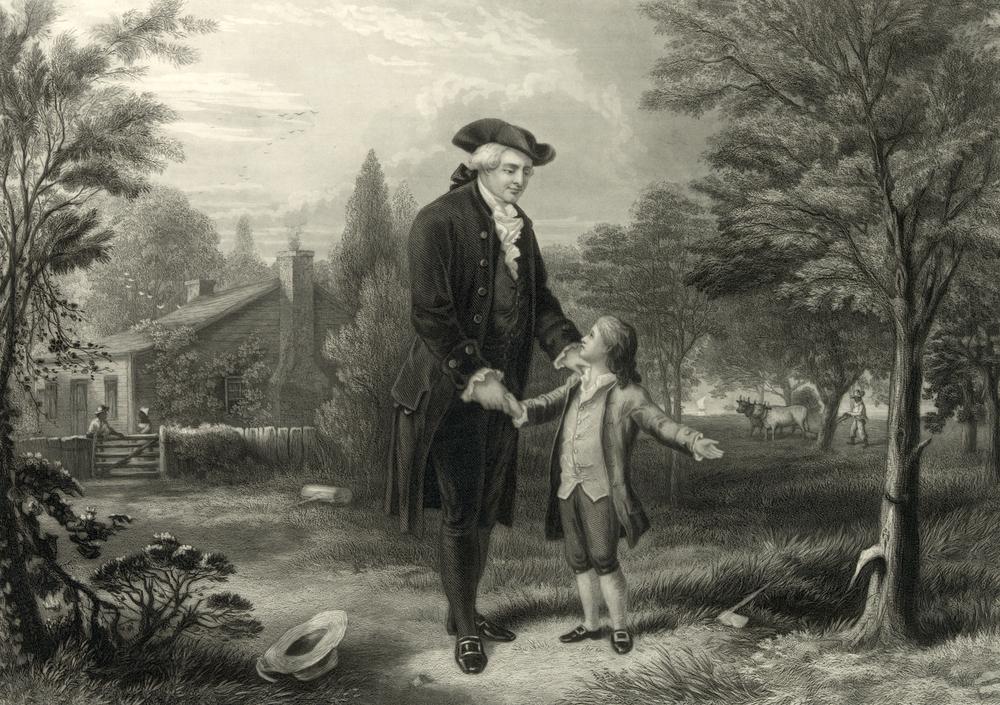The tale of George Washington and the cherry tree is a story of virtue and paternal love that has endured for generations, shaping our perceptions of the first president’s early life. It’s also the source of Washington’s famous line: “I cannot tell a lie.”
Ironically, the legend may in fact be purely fiction, but that’s another story. Whether historically accurate or not, the story is part of our American heritage.






